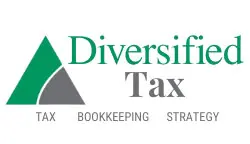What Is Local Tax?
What Is Local Tax?
In the intricate web of the United States tax system, local taxes play a crucial role in funding the essential services and infrastructure that shape our communities. From the bustling streets of New York City to the quiet suburbs of Ohio, the impact of these localized levies is felt by businesses and individuals alike. In this extensive guide, we’ll delve into the world of local taxes, exploring their various forms, the compliance challenges they present, and the vital public services they support.
Understanding the Basics of Local Taxes
Local taxes are assessments imposed by state, county, or municipal governments to fund a wide range of public services and initiatives. These levies come in many forms, including property taxes, sales taxes, income taxes, and a myriad of other fees and charges. The key distinction between local taxes and federal or state taxes is their direct connection to the community, as the revenue generated is used to support local priorities and projects.
The Diversity of Local Tax Structures
One of the defining characteristics of local taxes is their inherent diversity. Each jurisdiction, be it a state, county, or municipality, has the authority to establish its own tax policies and rates. This decentralized approach leads to a patchwork of tax systems across the United States, with varying rates, exemptions, and reporting requirements.
For example, while some states may impose a statewide income tax, others may delegate this authority to individual counties or cities. The same holds true for sales taxes, where local jurisdictions can add their own surcharges to the state-level rate. This complexity can pose significant challenges for businesses operating in multiple locations, as they must navigate the nuances of each local tax regime.
The Purpose of Local Taxes
Local taxes serve a vital purpose in funding the essential services and infrastructure that make our communities thrive. From maintaining public schools and libraries to supporting law enforcement and fire departments, these revenue streams are the lifeblood of local governments. They also contribute to the construction and upkeep of roads, parks, and other public facilities that enhance the quality of life for residents.
Importantly, the benefits of local taxes are often tangible and directly experienced by the taxpayers. Unlike federal taxes, which can feel more abstract, local levies are closely tied to the visible improvements and services that enhance the daily lives of community members.
Common Types of Local Taxes
While the specific local tax landscape varies across the United States, there are several common types of levies that are widely adopted by state and municipal governments.
Property Taxes
Property taxes are perhaps the most familiar and significant local tax for many homeowners. These assessments are typically based on the assessed value of a property and are used to fund a wide range of public services, from education to infrastructure maintenance.
The guidelines for property taxes are established at the state level, with local governments given the authority to set specific rates and collection processes. This can result in significant variations in property tax burdens, even within the same state.
Sales Taxes
Sales taxes are another ubiquitous form of local taxation, with most states and many municipalities imposing their own sales tax rates on top of the federal levy. These taxes are charged on the purchase of goods and services, and the revenue is used to support a variety of public programs and initiatives.
The complexity of sales tax systems can be daunting, as rates, exemptions, and reporting requirements can differ significantly between jurisdictions. Businesses operating across state or local boundaries must meticulously track these nuances to ensure compliance.
Income Taxes
While less common than property and sales taxes, some states and municipalities also impose their own income taxes on residents and workers. These levies are typically withheld from employee paychecks and remitted to the appropriate local tax authority.
The rates and structures of local income taxes can vary widely, with some jurisdictions applying a flat rate and others employing a progressive system. Employees who work in one location but reside in another may also be subject to dual income tax obligations, further complicating compliance.
Other Local Taxes and Fees
In addition to the major tax categories, local governments may also levy a variety of other charges and fees to fund specific initiatives or services. These can include:
- Utility taxes: Assessments on the consumption of electricity, gas, water, and other utilities.
- Excise taxes: Levies on the purchase of specific goods or services, such as fuel, alcohol, or tobacco.
- Licensing and permitting fees: Charges for various business licenses, construction permits, and other regulatory requirements.
- Hotel/motel taxes: Taxes on overnight stays, often used to support tourism-related projects.
- Payroll taxes: Levies on employee wages, typically used to fund social services or public pension systems.
The diversity and complexity of these local tax structures can present significant challenges for businesses and individuals, requiring careful monitoring and compliance efforts.
Complying with local tax requirements can be a daunting task, particularly for businesses with operations or employees across multiple jurisdictions. Failing to meet these obligations can result in penalties, fines, and other legal consequences, underscoring the importance of a comprehensive understanding of the local tax landscape.
Determining Tax Obligations
The first step in navigating local tax compliance is to identify the specific obligations that apply to your business or personal situation. This process often involves researching the tax policies and requirements of each state, county, and municipality where you have a presence or employ workers.
Factors such as the location of your business, the residence of your employees, and the nature of your operations can all influence the local tax obligations you must address. Consulting with a tax professional or utilizing specialized compliance management platforms can be invaluable in this process, as they can help you stay abreast of the ever-changing local tax landscape.
Establishing Withholding and Remittance Processes
Once you’ve determined your local tax obligations, the next step is to establish robust withholding and remittance processes. This may involve setting up payroll systems to accurately calculate and deduct the appropriate taxes from employee paychecks, as well as ensuring timely and accurate remittance to the relevant local tax authorities.
In some cases, local tax jurisdictions may offer “convenience withholding” options, allowing employers to voluntarily withhold taxes on behalf of their employees, even if they are not legally required to do so. Navigating these nuances can be crucial for maintaining compliance and minimizing the administrative burden on both the employer and the employee.
Registering with Local Tax Authorities
Before you can begin remitting local taxes, you’ll need to register your business with the appropriate tax authorities in each jurisdiction where you have a presence. This process may involve obtaining business licenses, tax identification numbers, and other necessary credentials to operate within the local tax system.
Many local governments have streamlined their registration processes, allowing businesses to complete these formalities online or through a centralized portal. However, the specific requirements can vary significantly, underscoring the importance of thorough research and planning.
Staying Informed and Adapting to Changes
The local tax landscape is constantly evolving, with jurisdictions regularly updating their policies, rates, and reporting requirements. Maintaining compliance requires ongoing vigilance and a commitment to staying informed about these changes.
Subscribing to updates from state and local tax authorities, monitoring industry publications, and collaborating with tax professionals can help businesses and individuals stay ahead of the curve. Adapting to these changes in a timely manner is crucial to avoid penalties and ensure the continued smooth operation of your organization.
The Interplay of Local, State, and Federal Taxes
While local taxes are distinct and independent, they do not exist in a vacuum. Instead, they are part of a complex web of taxation that spans the federal, state, and local levels, each with its own unique policies, structures, and compliance requirements.
Understanding the Hierarchy of Tax Jurisdictions
At the top of the tax hierarchy is the federal government, which imposes a range of levies, including income tax, payroll tax, and various excise taxes. Below the federal level, state governments have the authority to levy their own taxes, such as income tax, sales tax, and property tax, among others.
Local governments, in turn, have the power to impose additional taxes and fees within their respective jurisdictions. This layered approach to taxation can result in a complex web of overlapping obligations for businesses and individuals, requiring careful coordination and compliance efforts.
The interplay between local, state, and federal taxes can create both challenges and opportunities for taxpayers. For example, in some cases, local income taxes may be credited against state income tax obligations, while in others, state taxes may be deductible from federal taxable income.
Understanding these interactions and leveraging available credits, deductions, and exemptions can be crucial for minimizing the overall tax burden and ensuring compliance across all levels of government. Consulting with tax professionals who are well-versed in the nuances of this multilayered tax system can be invaluable in navigating these complexities.
The Importance of Coordination and Collaboration
Effective coordination and collaboration between local, state, and federal tax authorities are essential for ensuring a cohesive and efficient tax system. This may involve the sharing of information, the harmonization of reporting requirements, and the development of streamlined compliance processes that reduce the administrative burden on taxpayers.
By fostering this level of coordination, tax jurisdictions can work together to address emerging challenges, such as the rise of e-commerce and the need to adapt tax policies to changing economic and social landscapes. This collaborative approach can ultimately benefit both taxpayers and the communities they serve.
Conclusion: Embracing the Complexity of Local Taxation
As we’ve explored, local taxes are a fundamental component of the United States tax system, playing a crucial role in funding the essential public services and infrastructure that shape our communities. While the complexity of this landscape can be daunting, embracing a proactive and informed approach is essential for both businesses and individuals seeking to navigate the nuances of local taxation.
By staying up-to-date on the latest tax policies, establishing robust compliance processes, and leveraging available resources and expertise, taxpayers can ensure they meet their obligations while also maximizing the benefits and opportunities presented by local tax systems. Ultimately, this commitment to understanding and engaging with local taxation is a crucial investment in the long-term prosperity and well-being of our communities.




